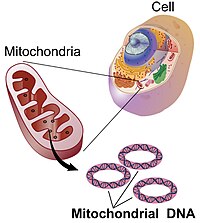
Photo from wikipedia
Thamnocephalidae, a family of Anostraca which is widely distributed on all continents of the world except Antarctica, currently consists of six genera and approximately 63 recognized species. The relationships among… Click to show full abstract
Thamnocephalidae, a family of Anostraca which is widely distributed on all continents of the world except Antarctica, currently consists of six genera and approximately 63 recognized species. The relationships among genera in Thamnocephalidae and the monophyly of Thamnocephalidae, determined using morphological characteristics or gene markers, remain controversial. In order to address the relationships within Thamnocephalidae, we sequenced Branchinella kugenumaensis mitogenomes and conducted a comparative analysis to reveal the divergence across mitogenomes of B. kugenumaensis. Using newly obtained mitogenomes together with available Anostracan genomic sequences, we present the most complete phylogenomic understanding of Anostraca to date. We observed high divergence across mitogenomes of B. kugenumaensis. Meanwhile, phylogenetic analyses based on both amino acids and nucleotides of the protein-coding genes (PCG) provide significant support for a non-monophyletic Thamnocephalidae within Anostraca, with Asian Branchinella more closely related to Streptocephalidae than Australian Branchinella. The phylogenetic relationships within Anostraca were recovered as follows: Branchinectidae + Chirocephalidae as the basal group of Anostraca and halophilic Artemiidae as a sister to the clade Thamnocephalidae + Streptocephalidae. Both Bayesian inference (BI)- and maximum likelihood (ML)-based analyses produced identical topologies.
Journal Title: Genes
Year Published: 2022
Link to full text (if available)
Share on Social Media: Sign Up to like & get
recommendations!